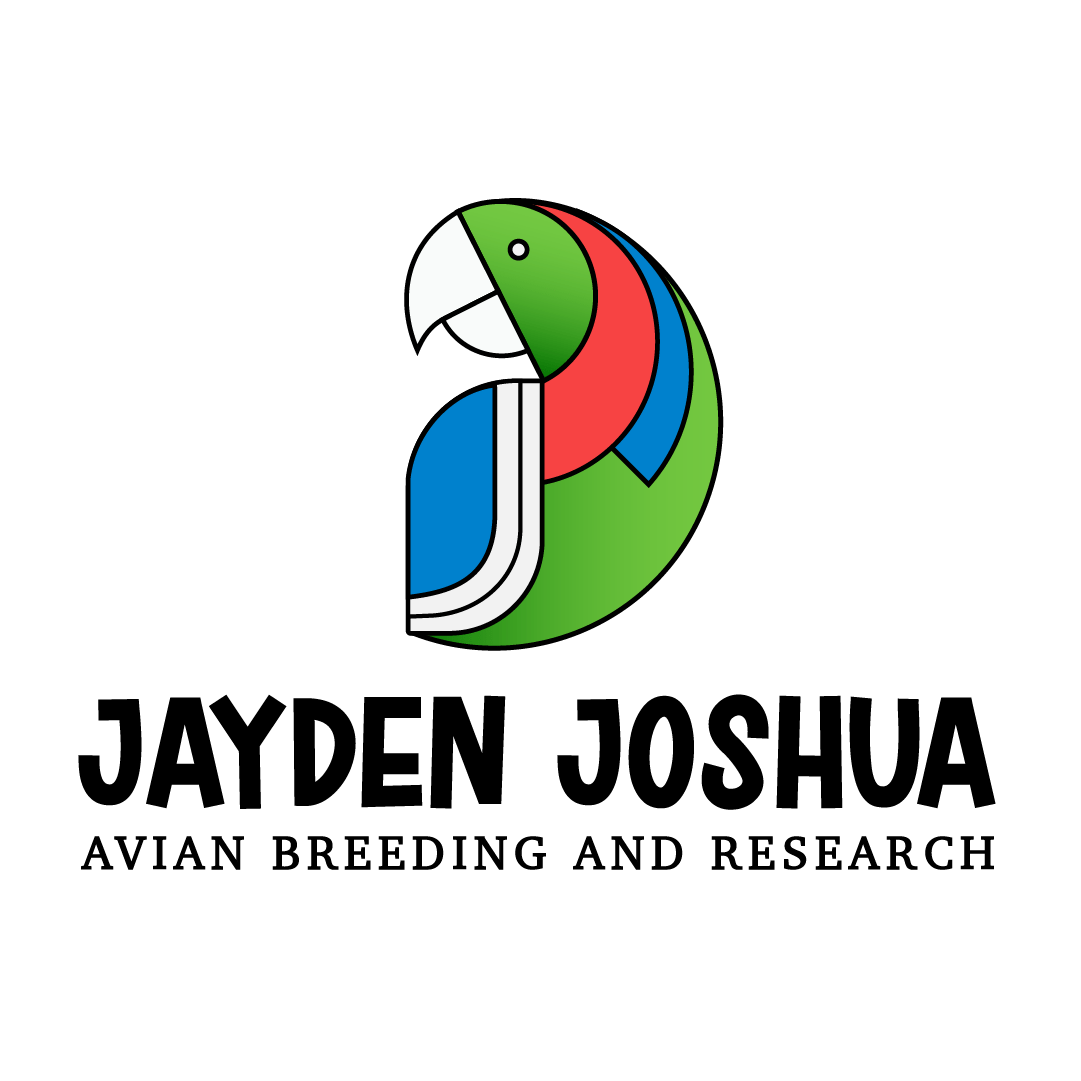
Discover everything you need to know about hyacinth macaws, including their habitat, diet, and the conservation efforts dedicated to protecting them. Read More
All About Hyacinth Macaw: Characteristics, Care, and Habitat
The Hyacinth Macaw, scientifically known as Anodorhynchus hyacinthinus, stands as the largest parrot species, recognized for its brilliant blue feathers and striking yellow eye-ring. Native to central and eastern South America, notably Brazil, these majestic birds inhabit diverse environments, from open woodlands to palm swamps and savannahs. Renowned for their intelligence and sociability, Hyacinth Macaws form strong pair bonds and often mate for life. However, they face threats such as habitat loss, illegal pet trade, and hunting, leading to their classification as vulnerable. Protecting their habitats and implementing conservation measures are essential to ensuring their survival in the wild.
Appearance of Hyacinth Macaw
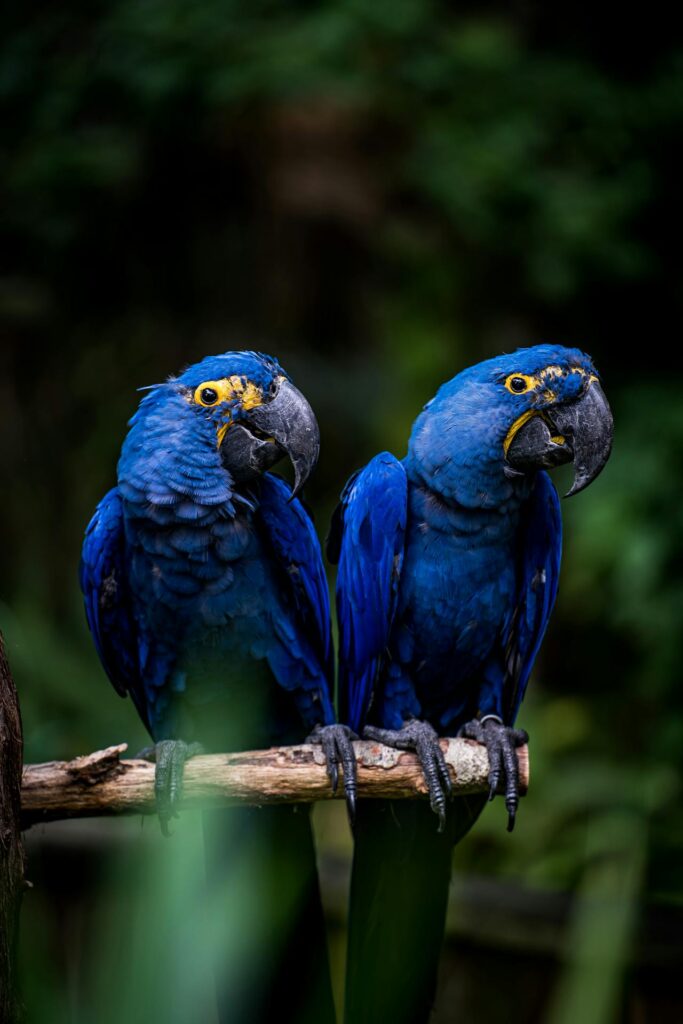
- The largest parrot by length, reaching up to 40 inches (1 meter) from head to tail.
- Striking plumage with a uniform, vibrant cobalt blue color all over their body.
- Pops of bright yellow around their eyes and the base and corners of their beak, creating a cheerful expression.
- Long, pointed tail feathers.
- Powerful, black, hooked beak capable of cracking nuts and even wood.
- Black eyes with a distinctive yellow ring around them.
Behaviour of Hyacinth Macaw
- Generally known as “gentle giants” due to their even-tempered and calmer personalities compared to other macaws.
- Highly intelligent and can mimic human speech.
- Playful and inquisitive birds that enjoy interaction and mental stimulation.
- Strong flyers, reaching speeds of up to 35 miles per hour (56 kilometers per hour).
- Social birds that live in pairs or small flocks in the wild.
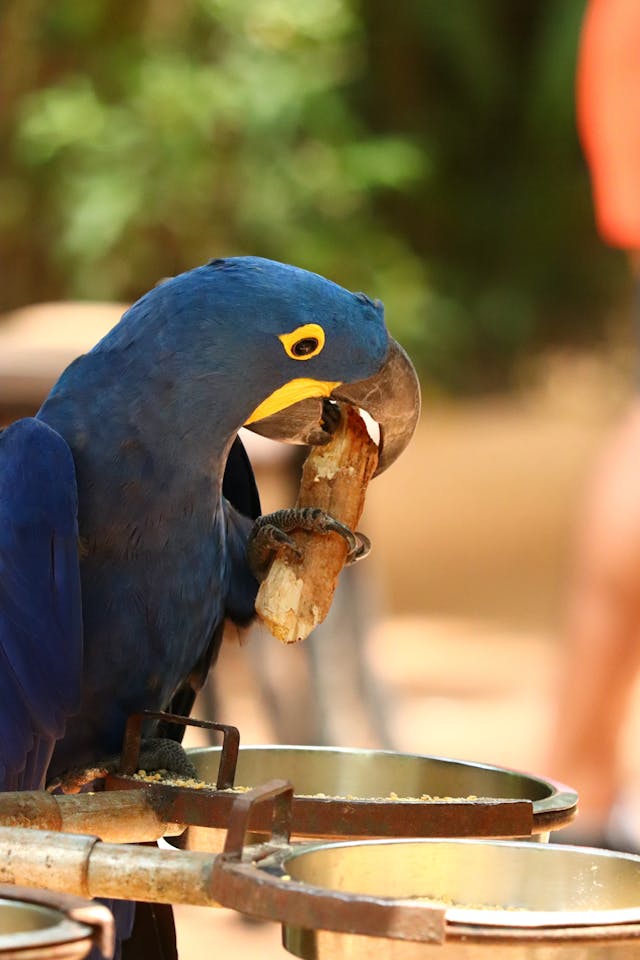
Diet of Hyacinth Macaw
- Primarily eat nuts, seeds, and fruits in the wild, with a particular fondness for hard-shelled nuts like Brazil nuts. Their powerful beaks are well-suited for cracking these tough foods.
- In captivity, they require a specialized diet to meet their nutritional needs, often including a combination of pellets, nuts, and fresh fruits and vegetables.
Habitat of Hyacinth Macaw
Native to rainforests and savannas of central and eastern South America, particularly Brazil.
Social Behaviour
They are social creatures, often forming strong pair bonds and living in small family groups. They communicate with each other through vocalizations and body language.
Lifespan of Hyacinth Macaw
Can live for up to 60+ years in captivity with proper care
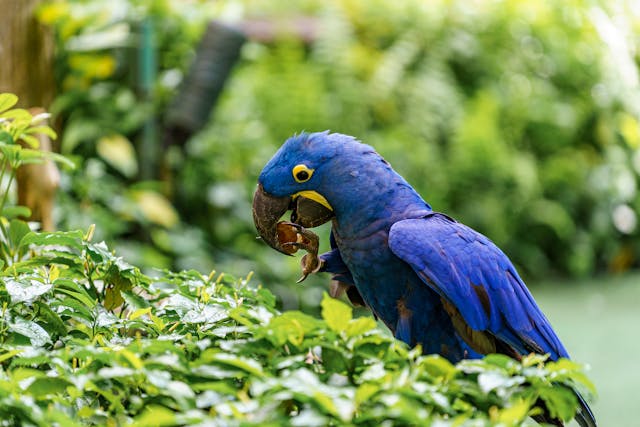
Subscribe to our newsletter!
